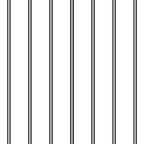Quantum Mechanics
In the earliest civilizations such as ancient Greece there was no distinction between philosophy and science. Philosophy encompassed most of science. The great Aristotle was an astronomer, a physicist, a biologist and a political scientist. Naturally his contemporaries lacked the equipment, technique and knowledge for rigorous experiments as required by science today. As such their deductions came from daily experiences and conceptual analysis. The late Stephen Hawking even proclaimed that “philosophy is dead” because it has “not kept up with modern science”. He is of course alluding to the fact that every branch of science today is compelled to conduct trials, observations, experiments and calculations to back up every theory and hypothesis. This is why astronomical sums are spent to recreate scenarios using sophisticated equipment in order to prove theories. Anything less is considered pseudo-science in the realm of alchemy and astrology. This is why Aristotle’s philosophy with its logical and conceptual techniques was eventually separated from what we call sciences today. Funny enough the study of quantum physics seemed to have brought philosophy back into the sciences.
The great Einstein with his discovery of spacetime in the general theory of relativity and the special theory of relativity died without being able to make sense of quantum physics much less uniting quantum physics with spacetime. The irony is that Einstein was awarded the Nobel Prize in Physics in 1922 for the photoelectric effect which introduced the notion of quantum and the mere fact that there is something we don’t understand. Since then there were many attempts and theories proposed by researchers to make sense of the quantum phenomena. What makes the phenomena difficult to comprehend is that it goes against everyday understandings and intuitions we are familiar with.
The first is called quantum tunnelling. If we put a tennis ball in a sealed metal box then one can safely say that the probability of the position of the tennis ball being outside the box is zero (of course without unsealing the box). However if one replaces the ball with a quantum object such as an electron the probability of it being found outside is small but not zero. There are certain rare conditions when it is outside.
The second is that observation or measurement of the quantum object changes its behavior. Repeated experiments have proven that is so even when it is certain that the measuring does not in any way obstruct or influence the object. To turn this on its head the Copenhagen school of quantum physicists led by the legendary Niels Bohr asserts that the object can take many paths but by measuring it causes it to take one path. The experiments did show that it is not the method of the measurement but the fact that measuring happened caused the change. Hmmmm.
Philosophers have debated over generations on the difference between what is observed and what is really happening. This school of thought even inspired the blockbuster movie “The Matrix”. German philosopher Kant said that we have no access to the world or reality we cannot experience, known as the ontic view, or the noumenal world. We just know the phenomenal world and as our knowledge increases the phenomenal world changes. Perplexing.
The third and probably most bizarre characteristic of quantum objects is the one known as entanglement or non-locality. Experiments have shown that when objects are entangled (using various physical processes) one object’s measurement will immediately affect that of the others even when they are separate by a great distance. Even Einstein could not explain why this is the case and resorted to calling it “spooky action”. The explanation put forth by some for non-locality is that not all the properties of the object is on the object itself (hence the term non-locality). As to why and how the theory is still not completely elucidated.
One attempt to explain this is the “Many Worlds” theorem. It states that the world we live in is not the only one there is. There is purportedly an infinite number of worlds within the same amount of you causing all the possible outcomes. It may sound like science fiction but this theorem has been used to justify the range of possible outcomes in quantum reactions. What it is effectively saying is that you as one of you can only experience one of the many possible outcomes. This is why the outcome is a probability function rather than a definite answer. For me it is unsatisfying when one says that every possibility did occur but only one did in the world we are in.
As an aside, in scientific parlance the word “theory” does not mean “guess” or “conjecture”. IT is a lot more real and means “explanation” for phenomena. Therefore the theory of quantum physics is now prevalent in its usage, resulting in products we use in daily life such as LCD TV’s measuring devices etc. The most exciting development is probably the advent of the quantum computer whose computing power will be multitudes of present ones because of its ability to occupy different states at the same time.
The biggest obstacle and the biggest excitement are the same — it is our lack of understanding for how quantum objects can behave and therefore be able to harness its power. There are of course various promising steps which succeeded to do just that but in pristine laboratory conditions. I look forward to the day when we can have massive computer power and storage because of what we have learned and the benefits to be deprived.
